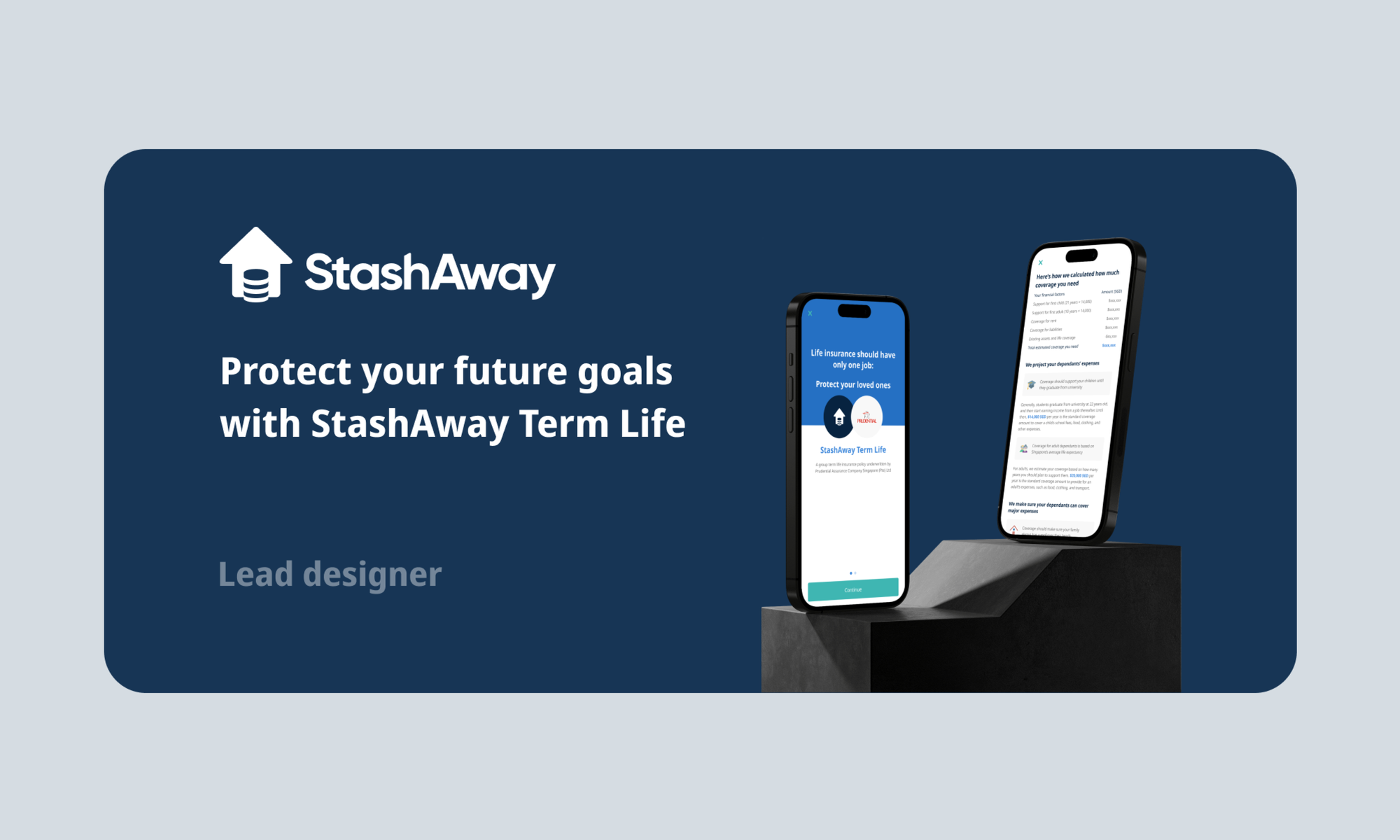StashAway helps customers build their wealth through investments. As the business began to grow, there was a need to expand beyond investment as an offering to include insurance coverage.
The challenge was to craft the experience and introduce the product in a manner that shifts our customer's perspective of StashAway as a robo-advisor to a holistic wealth management service that also included protection coverage.
We learned that the general attitudes our users had towards insurance products was skeptical. Their experiences with insurance agents was often that of being pushed to purchase new products; they felt like agents did not have enough understanding of their current financial and coverage status to be qualified to advise them on what to purchase. Customers want to feel like the product they're purchasing is right for them, and often worry about over-coverage or under-coverage.
Research highlights
→ Insurance products are overwhelming, and customers need to be guided on how to think about insurance products
→ Customers need to assess their coverage needs based on a framework
→ The concierge agent experience is convenient — how can an app elevate that further?
Concierge experience
A key research finding had to do with the question "What next?". With an agent, customers got whatever they needed through a message or call. I distilled the next steps into 3 simple steps to follow, accompanied by a large visual aid to wrap up the experience of the purchase.
